6 Reasons Why Sicily Should Be Your Next Italian Holiday Destination
If you had to sum up Sicily in just a few words, it’s an island of extremes. Rocky volcanic coastlines give way to white sandy beaches. Crumbling architectural treasures of the ancient world sit next to some of the most theatrical and perfectly preserved paintings of the Baroque. Menus feature hearty pasta dishes next to the freshest raw seafood, while the grandest of five-star luxury accommodations are found alongside meticulously designed boutique hotels and charming farm stays. It’s a cliche, but in Sicily, there’s truly something for everyone.
There’s also never been a better time to visit Sicily than now, with two new five-star hotel openings this summer that promise the utmost comfort in the heart of two of its most beloved cities. So here, find Vogue’s pick of the best places to stay—and of course, the best things to see, do, and eat—on the island that continues to serve at the crossroads of the Mediterranean.
A new guard of luxury hotels
The highest concentration of five-star hotels in Sicily has historically been found within the town of Taormina, famed for its idyllic cobblestoned streets, pink bougainvillea bursting from balconies, and the ancient Greek amphitheater which plays host to an eclectic lineup of musicians for outdoor concerts under the stars every summer. And this year, there’s a new (or at least, meticulously refurbished) hotel in town, San Domenico Palace. While the historic building—originally a monastery, still visible through the original frescos preserved above rooms which have now been converted into lavish suites—has been a hotel since 1986, it reopened this year as the Four Seasons’ new southern Italian jewel. With spectacular views across the bay and over to Mount Etna (best enjoyed by the infinity pool, Aperol spritz in hand), three restaurants, and a can’t-be-beat proximity to Taormina’s most popular shopping street, Corso Umberto, it blends Sicilian charm with the utmost luxury.
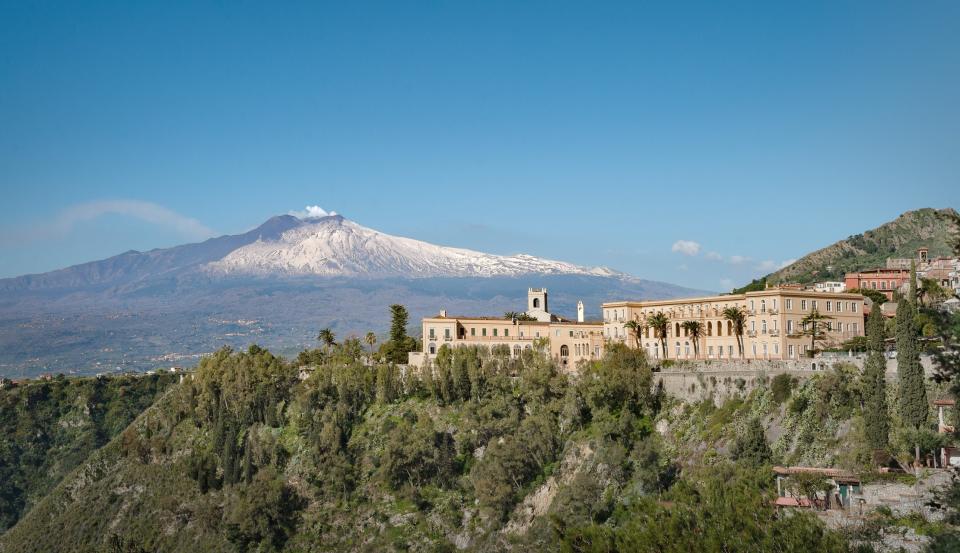
The other spot on the island that remains an eternal favorite for intrepid travelers is its capital city, Palermo. There you’ll find Villa Igiea, the latest offering from the Italian-owned (but very much international) hotel group Rocco Forte—just far enough outside the city center to offer peace and quiet, but merely a 10-minute journey from Palermo’s breathtaking historical sites, Sicilian down-home cooking, and of course, the extraordinary architecture that blends epic Norman scale with Arabic flourishes.
Overlooking a tranquil marina and boasting its own private harbor, you’ll also find a sparkling turquoise pool with a brand new restaurant offering fresh fish (whether crudo, tartare, or with a helping of pasta) daily for lunch, a spa featuring Irene Forte’s own skincare line as the star attraction, and spacious rooms with spectacular views. While it’s essential to experience the theatrical bustle of Palermo—whether the shouts of stallholders among the jovial chaos of the Ballaro market, or the city’s younger residents congregating around the bars that line the streets surrounding the Teatro Massimo opera house at the weekend—it’s also nice to be able to step back to somewhere a little calmer. For that, Villa Igiea ticks all the boxes.
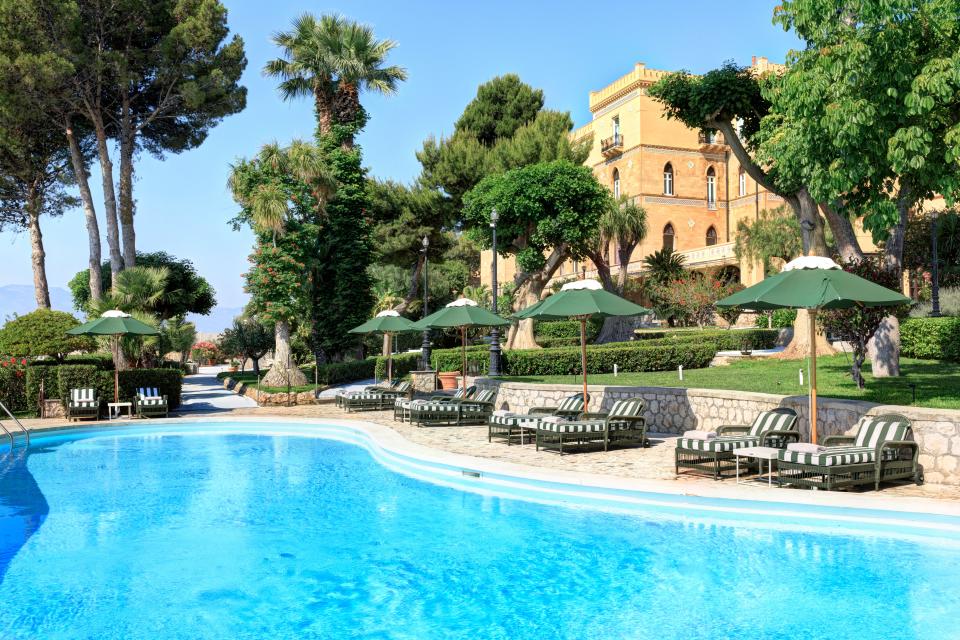
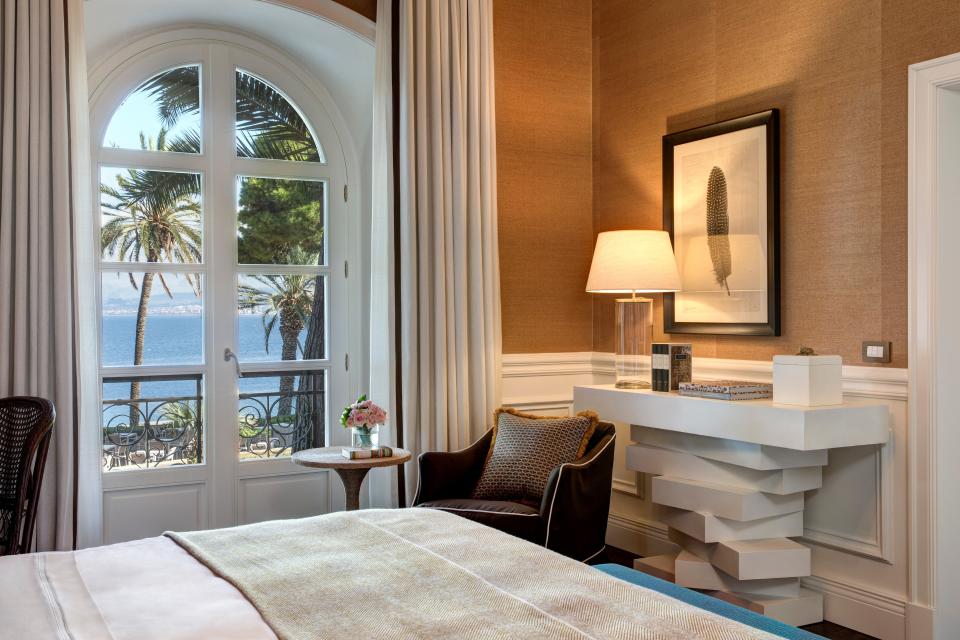
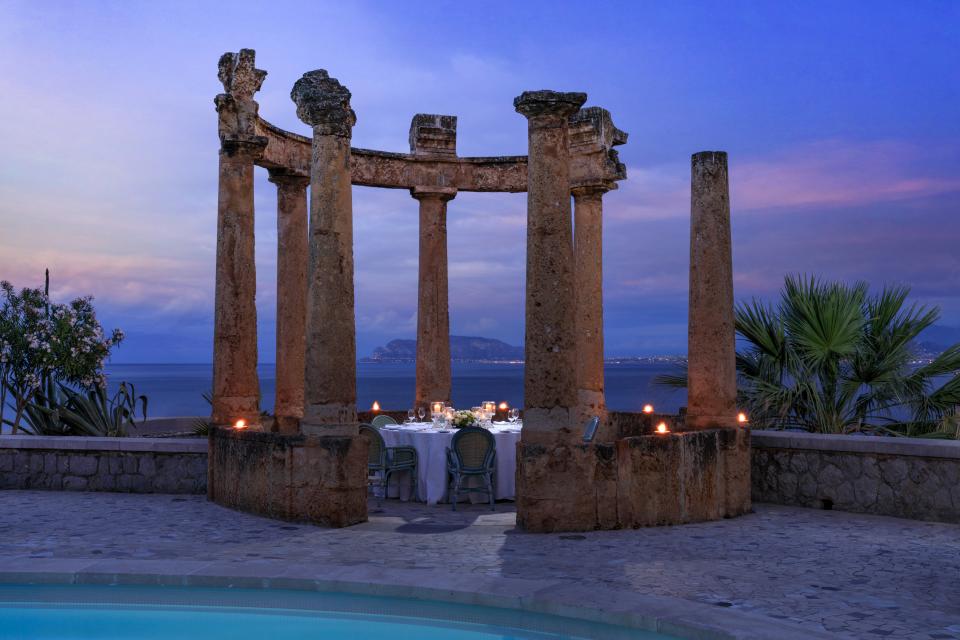
And a host of well-established names, too
Aside from the ancient ruins and all that shopping, Taormina is also famous for the idyllic beaches that run across a series of bays clustered around the base of the town, easily reached by a cable car. But if you’re looking for front-row seats at these small slices of paradise, there are a handful of reliable places to stay, too. First, there’s Villa Sant’Andrea, a private villa converted by Belmond and overlooking the Bay of Mazzarò, with lush subtropical gardens first planted by its aristocratic owners in the 19th century and an atmospheric restaurant overlooking the water.
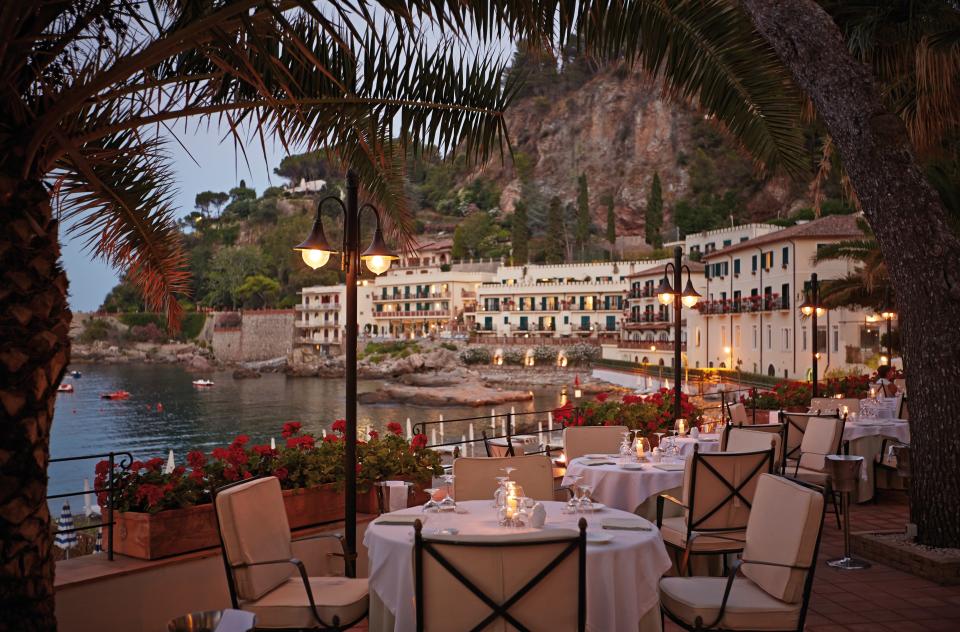
(Plus, if you want to explore both the bustling center of town and the beaches, you can also stay in Sant’Andrea’s sister hotel also owned by Belmond, Grand Hotel Timeo, whose rich history as a gathering place for writers and intellectuals from D.H. Lawrence to Jean Cocteau to Truman Capote is matched only by its convenient location right next to the amphitheater and cable car.)
If you want a little more flexibility with your swimming and snorkeling excursions, there’s another pair of hotels to note, not only situated within a few minutes walking distance of each other but overlooking neighboring bays that offer the best of both worlds. Mazzarò Sea Palace, which shares the Bay of Mazzarò with Villa Sant’Andrea, offers charming old-world glamour with an extensive section of the gorgeous sandy beach cordoned off with luxurious sun loungers and direct access to the water.
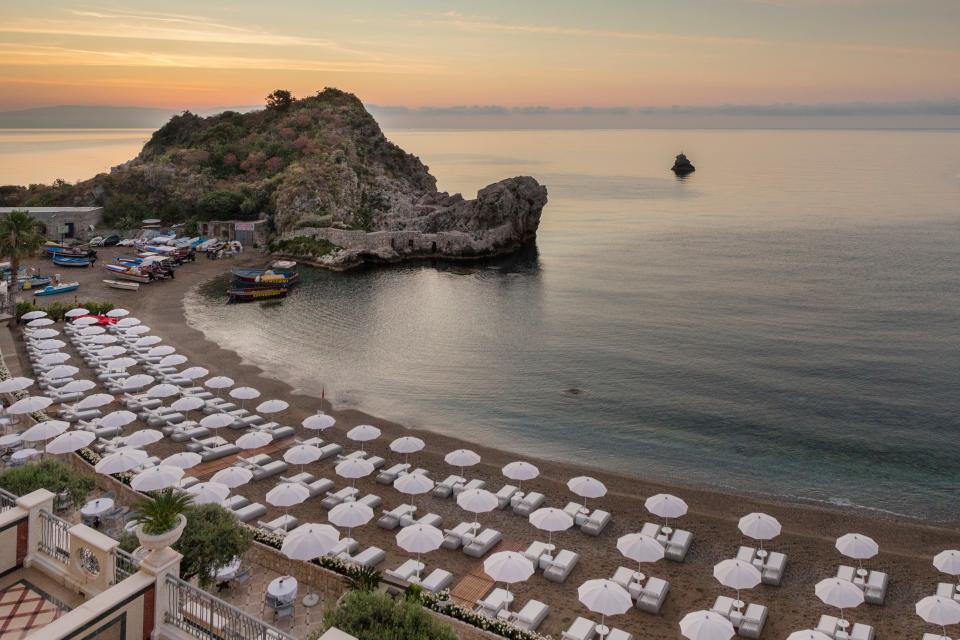
If you’re looking for something a little quieter in the height of summer, it’s worth checking out their more modern sister hotel, Atlantis Bay Hotel, which also has exclusive access to a bay of sparkling blue water (nicknamed the “Baia delle Sirene” after the mermaids rumored to have swum around the rocks in centuries past) that has nary a tourist in sight. Both feature gourmet dining and private terraces in every room, so you can enjoy an aperitif as the sky fades to a dusky Sicilian blue and take a seaside walk when all the tourists have gone in the evenings. If you want to feel like you’re living on your own private beach, while remaining minutes from the action, it’s the perfect option.
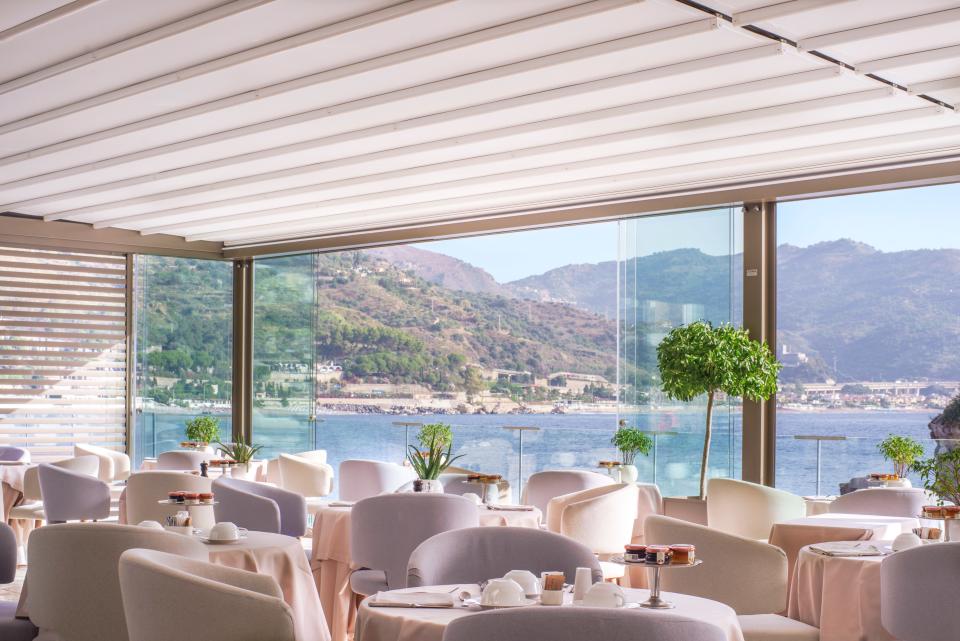
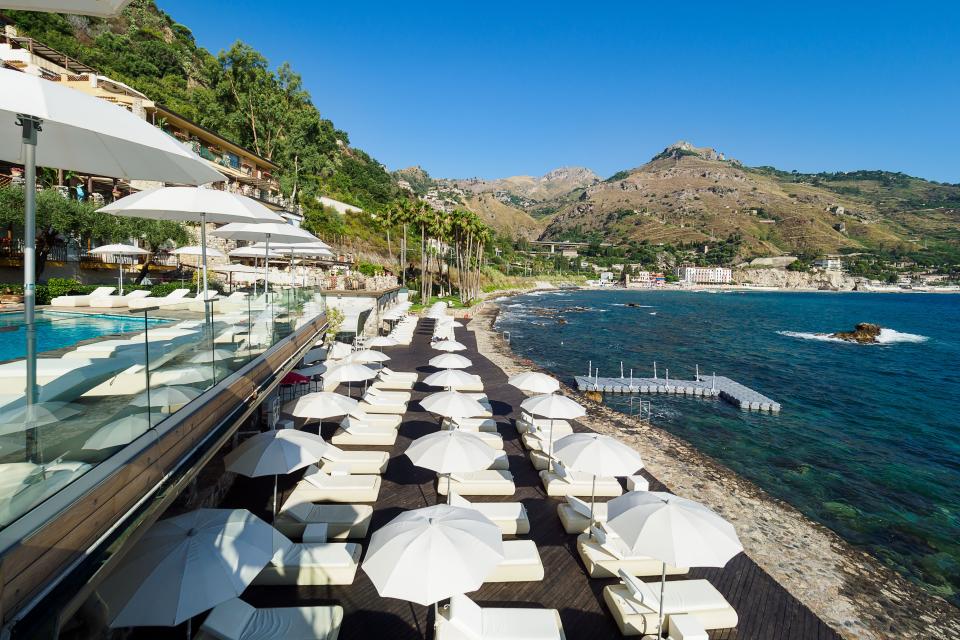
Plenty of opportunities to get off the beaten track
Sicily’s landscape is as diverse as the various cultures that have called the island home across the centuries. But venture beyond the most popular locales of Taormina and Palermo, and there are endless discoveries to be made—to name just a few, the pristine beaches surrounding the cities of Trapani and Marsala on the western coast, the crumbling Baroque architecture of the atmospheric island of Ortigia in Siracusa, or the hilltop towns, dust-blown valleys, and dramatic coastline of the island’s south-eastern corner, including cities like Ragusa, Modica, and Noto. (And that’s even without mentioning the lunar landscapes of lava rocks across Mount Etna, or the various volcanic landforms of the Aeolian Islands.)
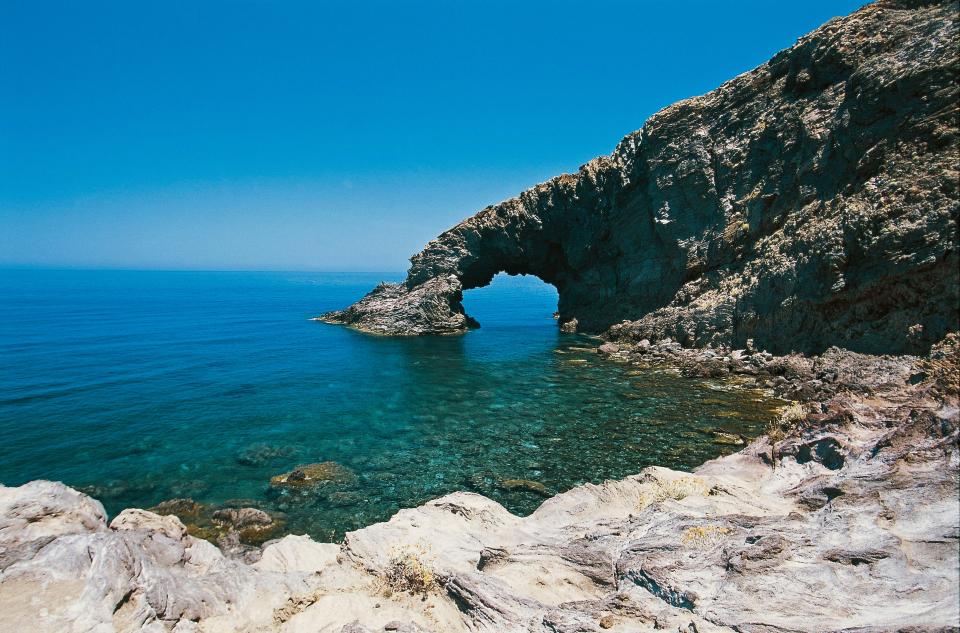
Arco dell'elefante,Pantelleria Island
For truly adventurous spirits, there’s also the spectacular island of Pantelleria, perhaps best-known internationally for serving as the backdrop to Luca Guadagnino’s decadent 2015 psychological drama A Bigger Splash, starring Tilda Swinton swanning around the island’s epic landscapes as a Bowie-esque rockstar in a full wardrobe of Raf Simons-designed Dior couture. Mere decades ago the island was barely known outside of Italy, gaining international recognition partly thanks to Giorgio Armani’s dramatic, sprawling estate on the north side of the island, while other celebrity vacationers in the past have included Madonna, Julia Roberts, and Sting.
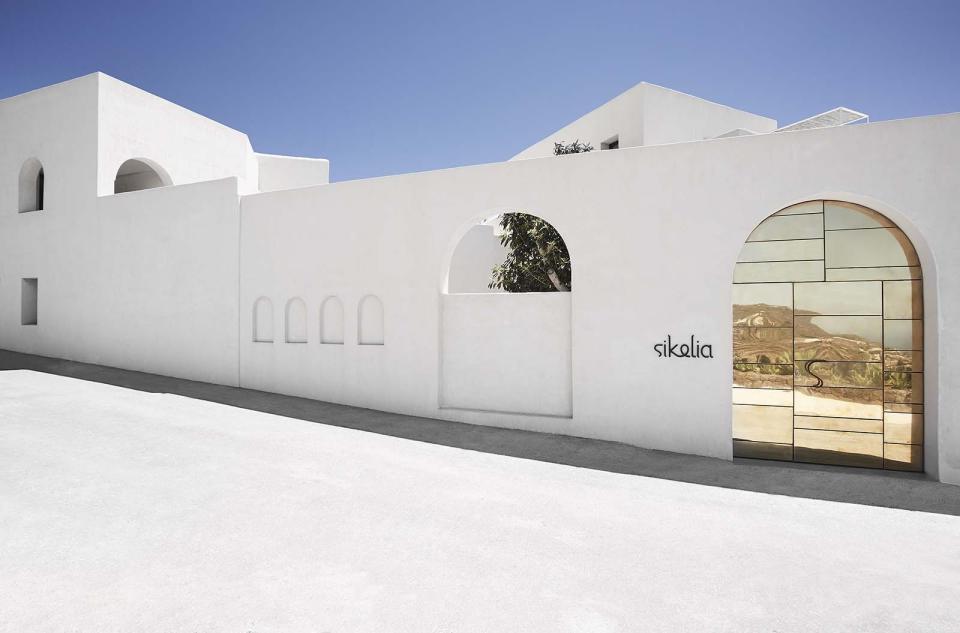
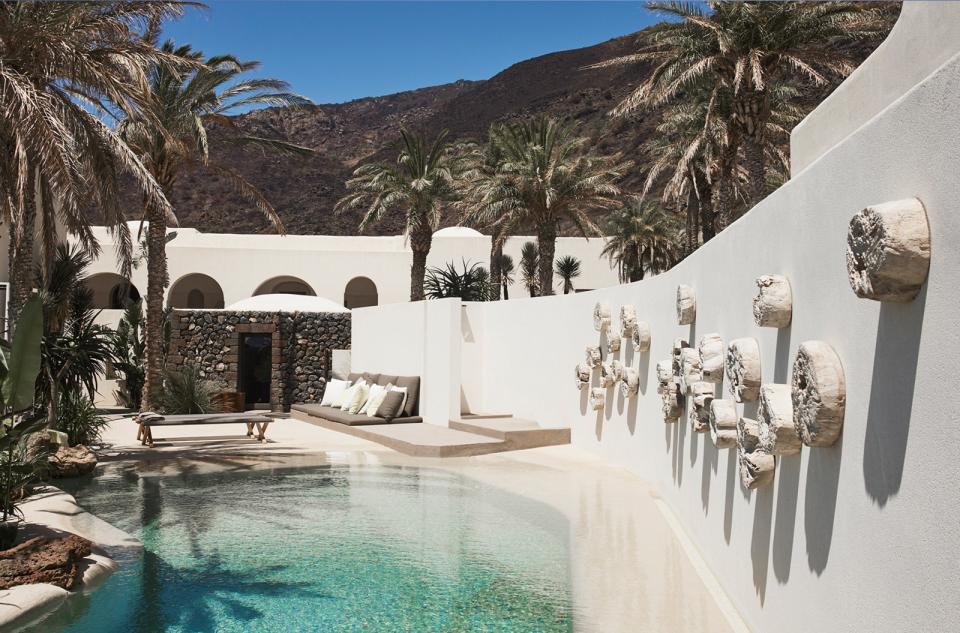
With its wild winds, windy roads, and rugged landscape, it’s often said that Pantelleria is “the island with no beaches,” although there are dozens upon dozens of stunning coves in which to take a dip. And if you’re looking for a little slice of luxury while you’re there, one hotel stands head and shoulders above the rest. To enter Sikelia through its impressive golden door, located near the charming town of Scauri on the island’s south side, is to step into your own little fortress featuring just 19 individually decorated suites. Blending the earthy minimalism of the traditional dammusi they were built from with more opulent touches like Frette linens and contemporary artworks, the holistic aesthetic vision for the hotel—spearheaded by its colorful owner, former basketball player Giulia Gelmetti—beautifully echo the colors and textures of the island itself.
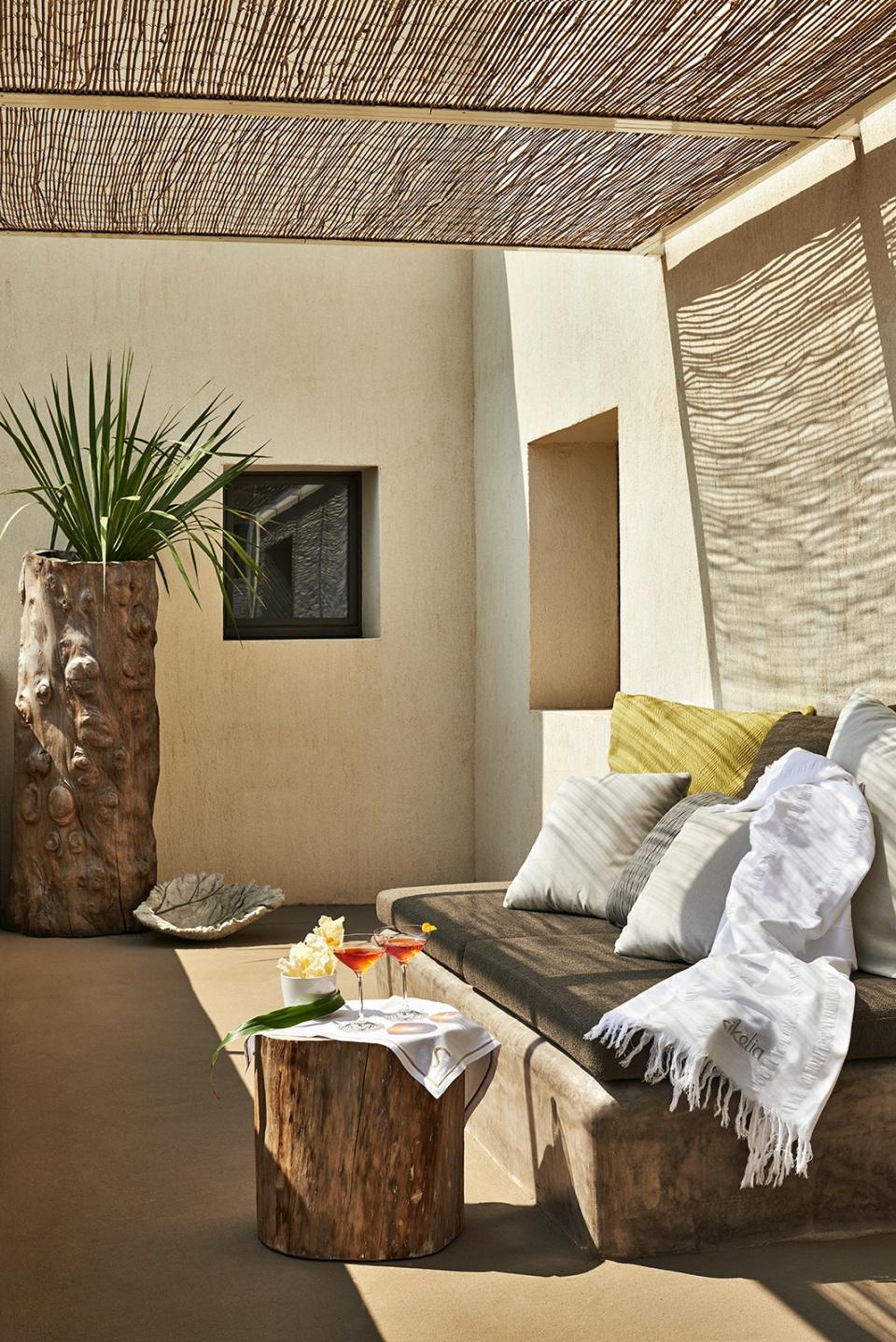
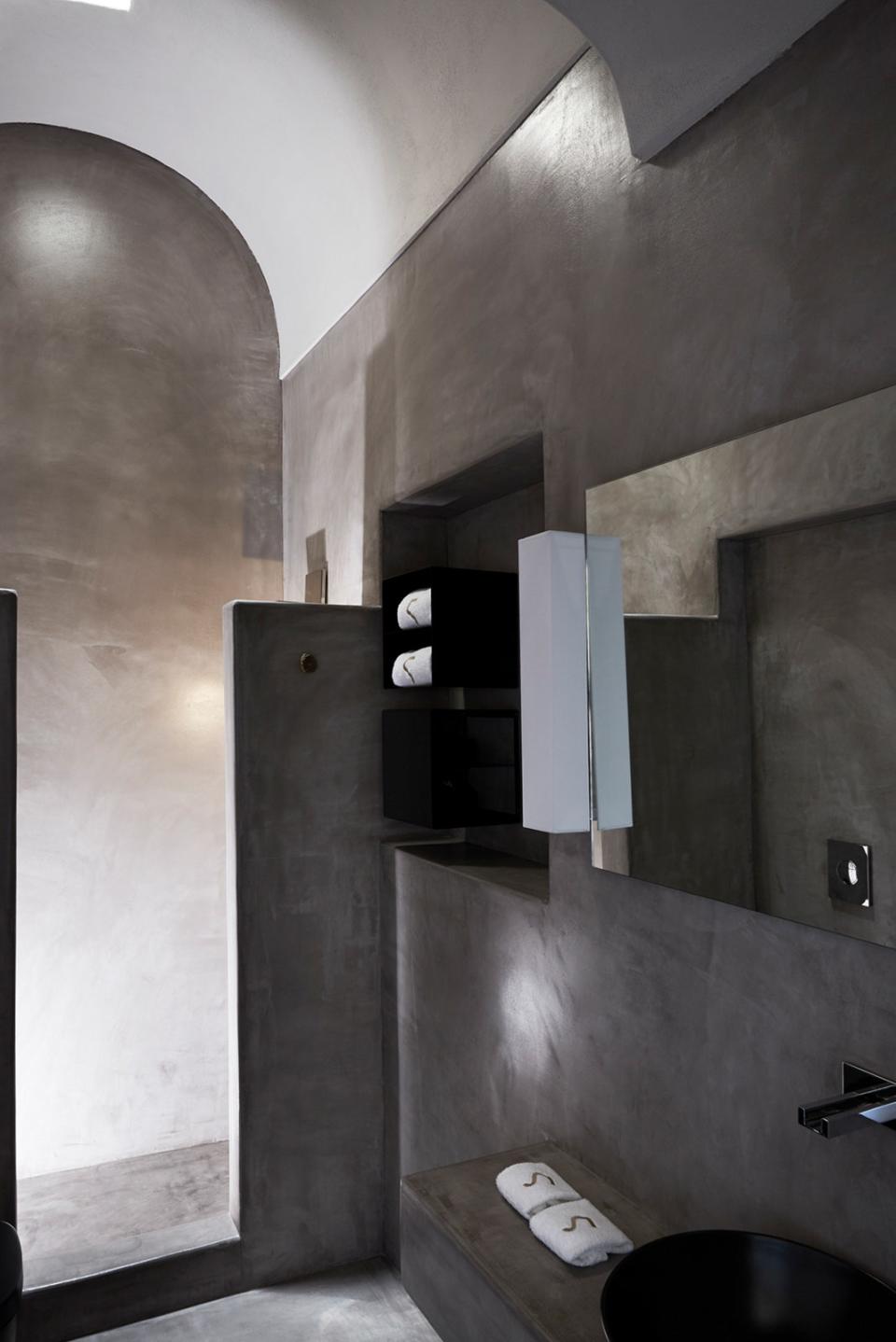
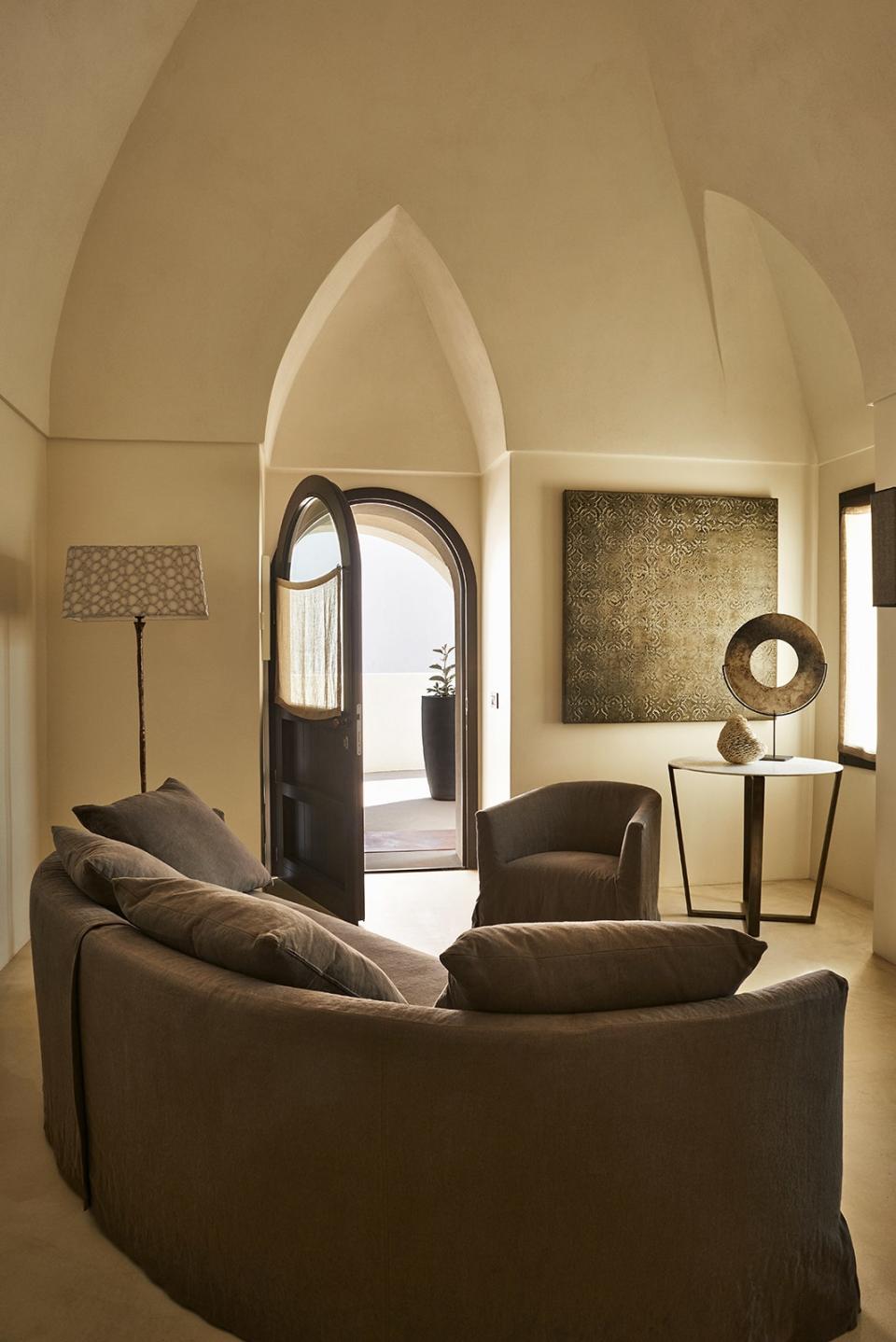
A highlight here is the dining, which manages to add gourmet flourishes while still remaining unfussy, with a particular highlight, inevitably, being the seafood. Under the guidance of Executive Chef Diego Battaglia, the restaurant’s food offering reflects Pantelleria’s unique location which actually hems closer to that of Tunisia than Sicily itself, incorporating Arab and North African elements into his riffs on the classic Sicilian ingredients of sea urchin, red prawns, and swordfish. Make sure you spend an evening at the hotel’s vineyard, Coste Ghirlanda—located a mere 10 minute drive away—where you can watch the stars before taking in a tasting menu under the care of chef Luca Mastromattei.
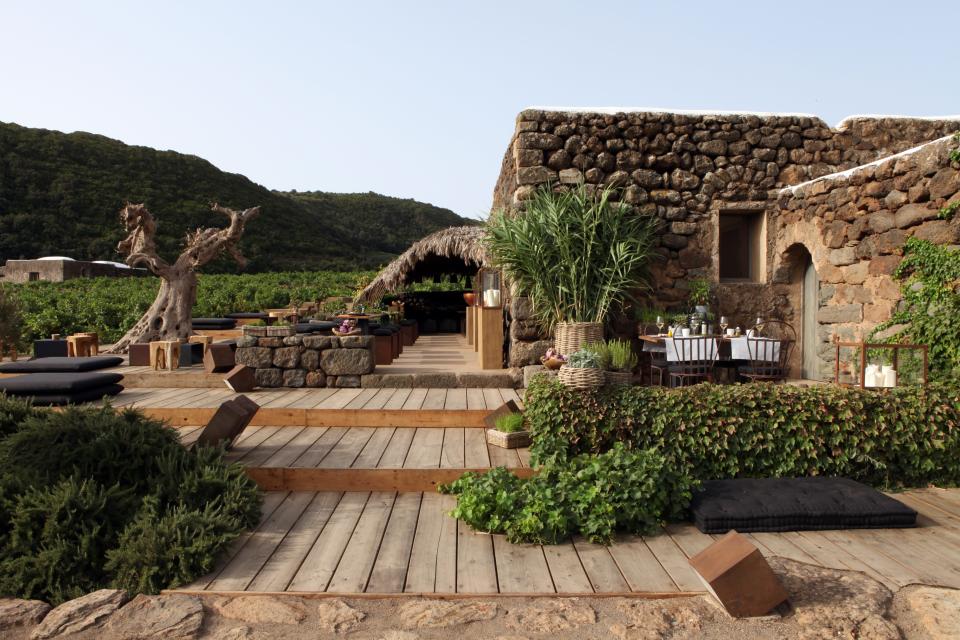
Some of the best seafood in Italy
Eating in Sicily is often a case of following your nose, with many of the island’s greatest culinary highlights found in its most unassuming places. This is partly thanks to the rich culture of street food, best tasted in open-air markets; from the now world-famous arancini to the traditional peasant food of sfincione, a pizza-like snack topped with tomato sauce and breadcrumbs. The island’s unique history of cultural cross-pollination (more on that later) has also given rise to a number of ingredients you might be surprised to find on an Italian menu, whether couscous from North Africa, raisins from Persia, or sesame seeds from the Levant. (Pistachios, eggplant, oranges, olives, almonds, and prickly pears also feature heavily in Sicily’s colorful cuisine.)
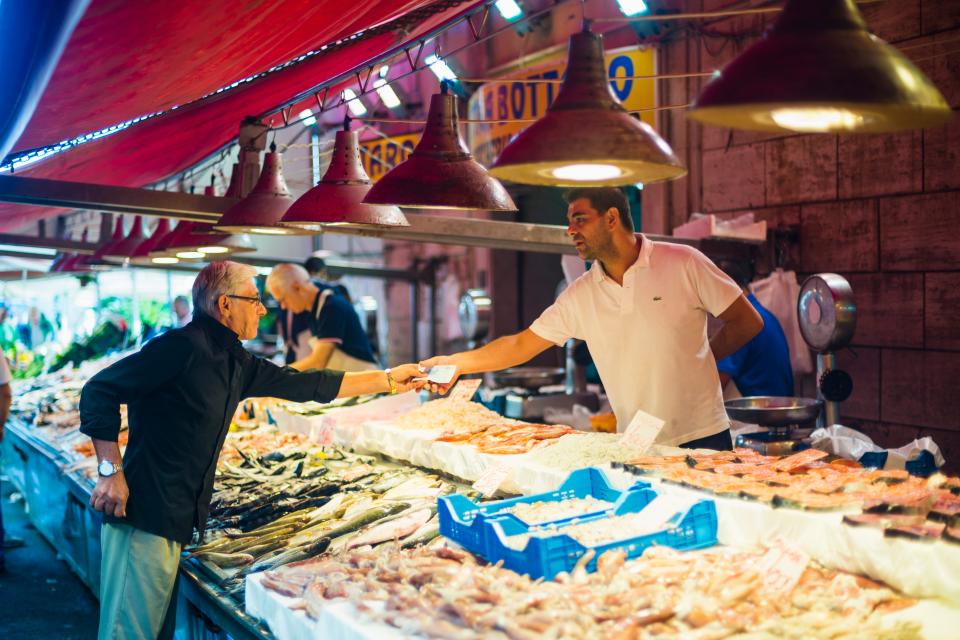
Sicilian person buying seafood at Ortigia Market, Syracuse, Siracusa, Sicily, Italy, Europe
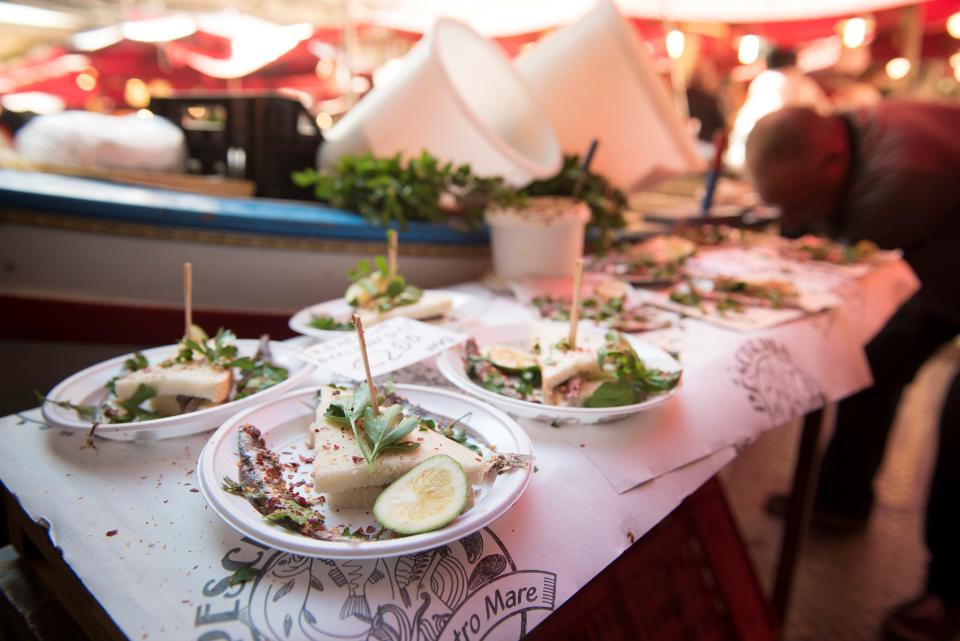
Raw sardines for aperitifs at fish market called Piscaria. Catania. Sicily. Italy. Europe
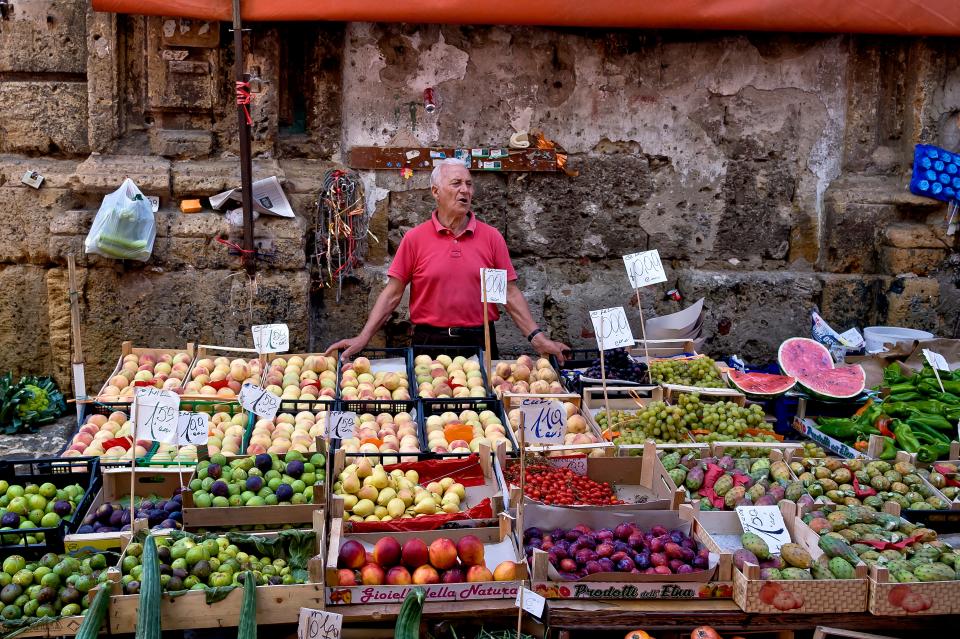
The Ballaro Market in Palermo
But of course, the real highlight of eating your way around Sicily is the sheer range and lip-smacking freshness of the seafood. In Palermo, there are endless options for down-home Sicilian cooking, with a notable absence of the typical tourist trap restaurants that often line the main thoroughfares of popular Italian cities. (Osteria Nonna Dora, Trattoria Trapani, and Osteria dei Vespri are all reliable go-tos.) For a more contemporary take on the island’s tradition of seafood, visit L’Ottava Nota in the city’s cosmopolitan Kalsa district for ceviche or amberjack tataki, or A’Cuncuma, which offers a tasting menu that journeys through the flavors of Sicily from both the sea and the earth.
If you’re looking for something sweet, Sicilian pastries are of course the stuff of legend, from cannoli to ricotta-stuffed cassatelle. A perennial favorite and something of a Palermo institution is Pasticceria Cappello, conveniently found just steps from the tourist hotspot of the Palazzo dei Normanni, which serves all the classic Sicilian dolci along with their famous setteveli cake, featuring seven layers of chocolate and hazelnuts.
In Taormina, you’ll find a number of more gourmet options, including two Michelin-starred restaurants working at the forefront of contemporary Sicilian cooking. First, there’s Otto Geleng found in the heart of the Grand Hotel Timeo, which features just eight tables overlooking the Bay of Naxos with spectacular views of Etna and inventive riffs on traditional Sicilian dishes by chef Roberto Toro. Then, in The Ashbee Hotel—another popular option for stays in Taormina—there’s St. George by Heinz Beck, which is headed up by one of the youngest Michelin-star chefs in Italy, Delfo Schiaffino.
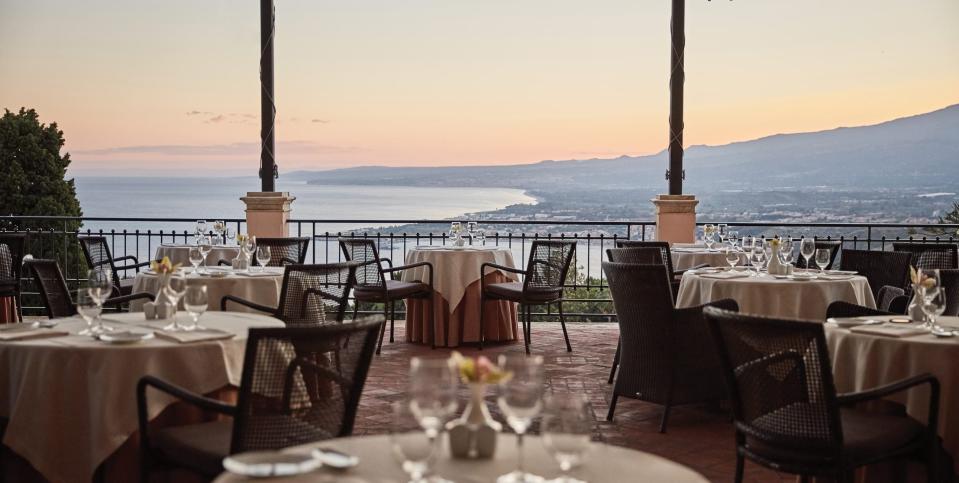
If you make it all the way to Pantelleria, make sure you stop by Osteria il Principe e il Pirata near the idyllic village of Gadir, known to be a favorite of Giorgio Armani’s whenever he hosts guests at his nearby holiday home. Start with grilled octopus or mackerel before enjoying homemade linguine or tagliolini with fresh seafood—all caught off the coast that morning, naturally.
A treasure trove of ancient and Baroque art
Sicily is often referred to as the crossroads of the Western world, not just for its prime location in the center of the Mediterranean, but also for the melting pot of cultures and ethnicities that form Sicily today, borne out of the island’s many millennia of being variously occupied by the Greeks, Romans, Normans, Arabs, French, Spanish, and even the Swiss. Each of these various cultures left an indelible mark on the island—and nowhere is that more visible than in the rich array of art and architecture that can be found in every corner.
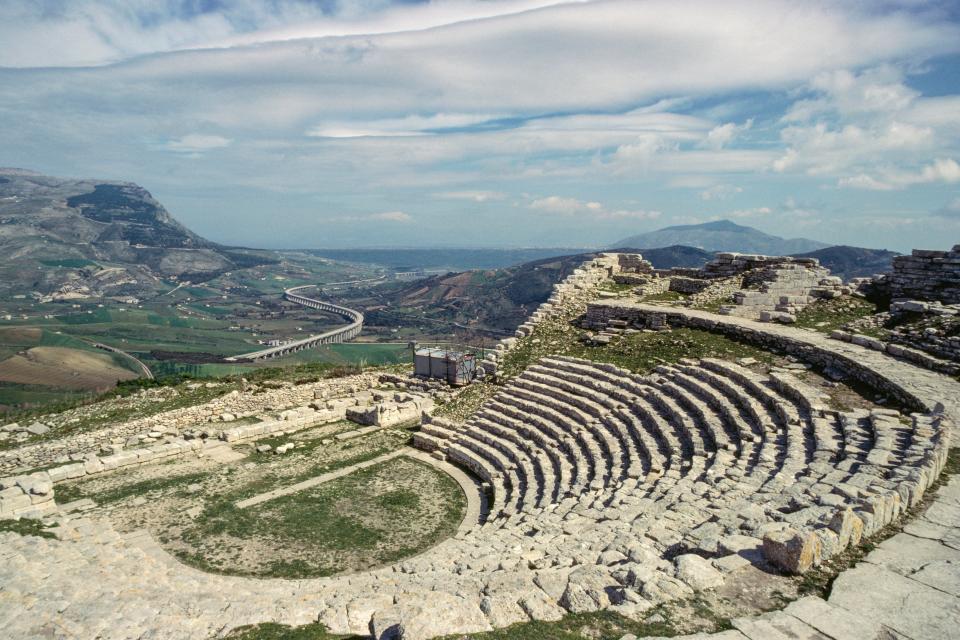
Mosaics at Villa del Casale, Piazza Armerina, Sicily, Italy
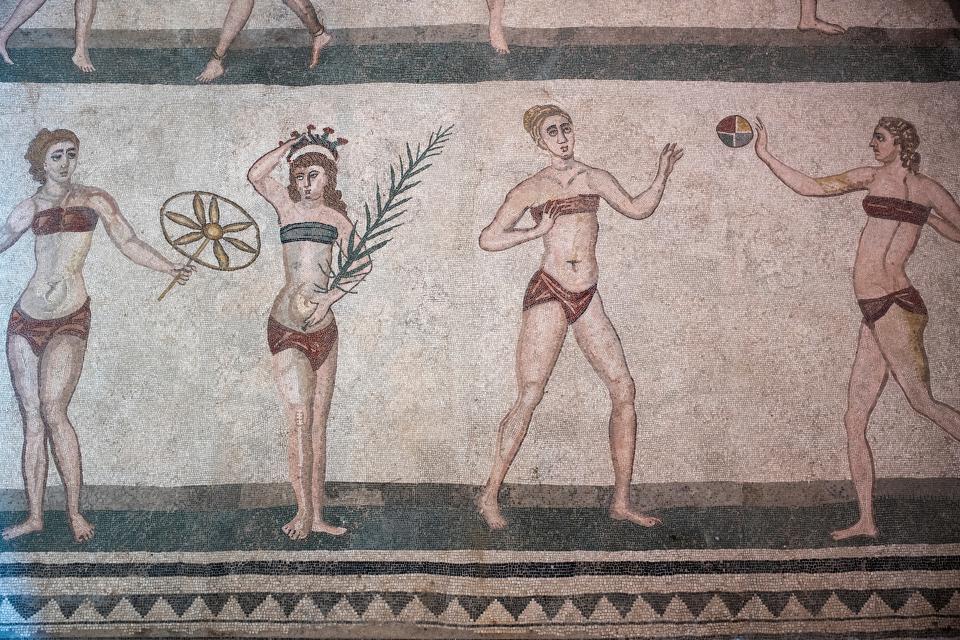
Mosaics at Villa del Casale, Piazza Armerina, Sicily, Italy
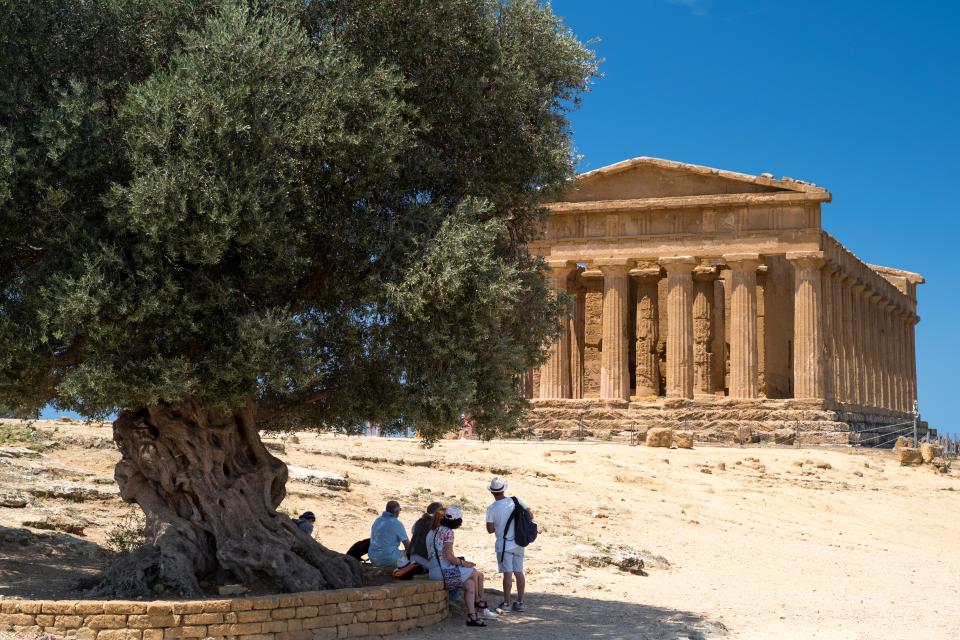
Ancient Olive Tree and Temple of Concord, Agrigento, Sicily, Italy
For those with a particular interest in the ancient world, the Valley of the Temples near the town of Agrigento—as well as the ruins of the ancient cities of Segesta and Selinunte on the island’s west coast—offer some of the best-preserved and most jaw-dropping examples of ancient Greek architecture outside of the Acropolis. Meanwhile, if the Romans are more your thing, the extraordinary mosaics found at the Villa Romana del Casale, a short drive from the charming town of Piazza Armerina, offer an insight into the whimsical decor of an ancient holiday home, from exotic animals being transported from Africa to Europe to bikini-clad gymnasts.
Sicily’s second heyday came during the 17th and 18th centuries when it was part of the Spanish Empire, resulting in a number of flourishing cities packed to the brim with lavish Baroque architecture. For fans of Caravaggio, two of his paintings can be found in Messina and Siracusa, while a third, found in the Oratory of San Lorenzo in Palermo, exists now merely as a replica, but with a fascinating backstory involving a Mafia robbery. Following an earthquake in 1693 that devastated much of the southeast, cities like Noto and Ragusa were reborn as elaborate and highly theatrical visions of Sicily’s distinctive take on the late Baroque style, and still impress with their faded grandeur.
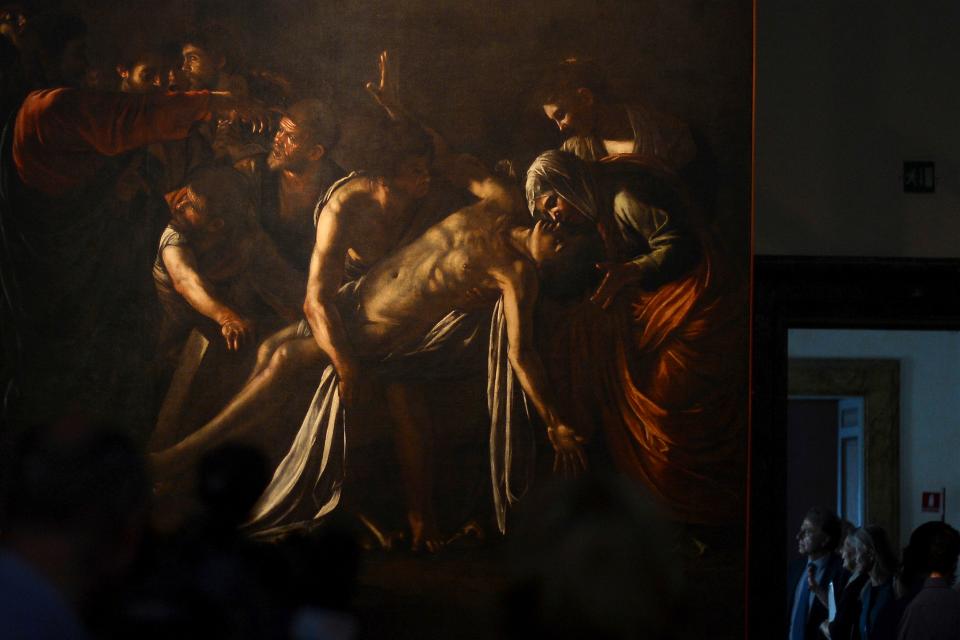
Piazza Duomo with the Cathedral of the Nativity of Holy Mary. Island of Ortigia. Syracuse. Sicily
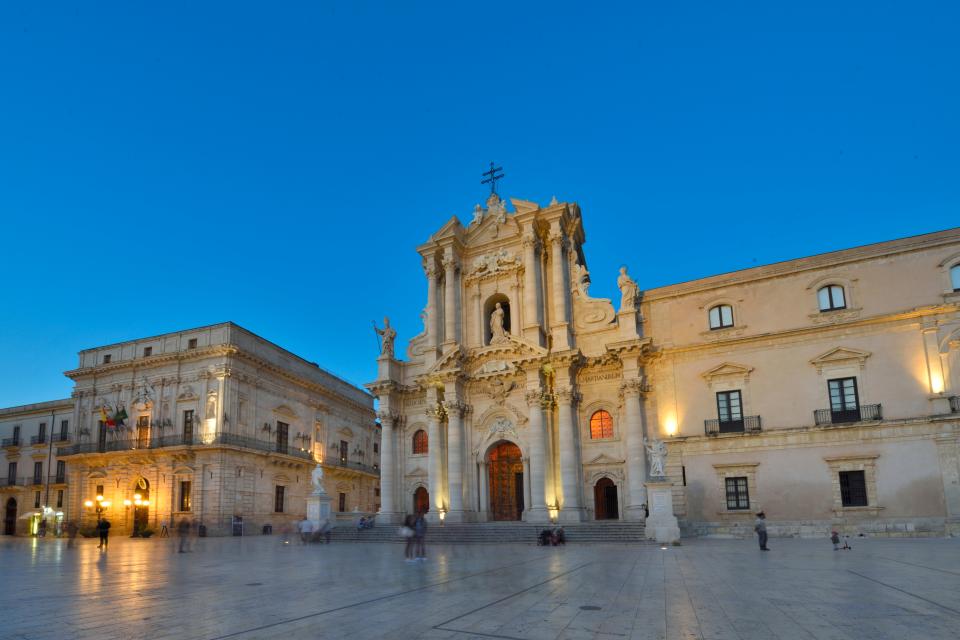
Piazza Duomo with the Cathedral of the Nativity of Holy Mary. Island of Ortigia. Syracuse. Sicily
Finally, for those seeking something a little more cutting-edge, the island has a handful of contemporary art gems too. First up is Palazzo Riso in Palermo, which houses a number of works by artists from the arte povera movement of the 1960s and ’70s including Jannis Kounellis, Carla Accardi, and Giovanni Anselmo, as well as international artists such as Richard Long and Christian Boltanski. (For bibliophiles, there’s also a well-curated bookshop and a cafe.) If it’s contemporary Sicilian artists you’re looking for, Palermo also boasts a thriving gallery scene, including Francesco Pantaleone Arte Contemporanea (FPAC), Nuvole Incontri d’Arte, and RizzutoGallery.
Some of Europe’s most unspoiled beaches
Of course, a holiday wouldn’t be a holiday without a dip in the ocean—and once again, Sicily has you more than covered. To find its best beaches, there are two regions worth exploring. First and foremost, there are the pristine sandy shores of the island’s west coast, most notably around the cities of Trapani and Marsala, lapped by turquoise-blue Mediterranean waters that stay warm even into the fall. (Some of the best-known include San Vito lo Capo, Tonnara di Scopello, Cala Marinella, and Marakaiobbo, but for more intrepid explorers there are plenty of more off-the-beaten-track coves to be discovered too.)
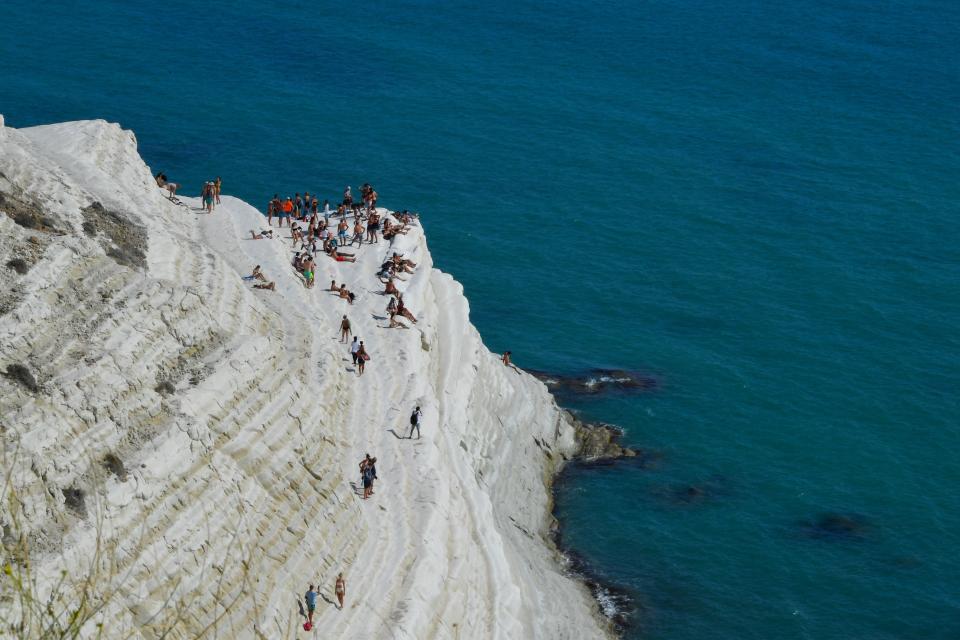
ITALY-TOURISM-FEATURE
The other place to find some of the island’s most gorgeous swimming destinations is at its southwestern tip in the provinces of Ragusa and Siracusa, with many in tricky to reach spots that more than reward the extra effort, such as the picture-postcard Calamosche or the nearby and slightly more accessible Marianelli. Just make sure you pack arancini for lunch, sunscreen, and plenty of water.
And if you’re in the region and feeling particularly adventurous, take a trip to the Cavagrande del Cassibile nature reserve, an enormous canyon full of scenic trekking trails that remains one of Sicily’s best-kept secrets. The ultimate highlight? After a long journey deep into the valley, you’ll find a network of crystal-clear lakes, waterfalls, and rock pools to cool off as the sun begins to fall behind the top of the canyon. The perfect end to a perfect day out.
Originally Appeared on Vogue

 Yahoo Movies
Yahoo Movies 
